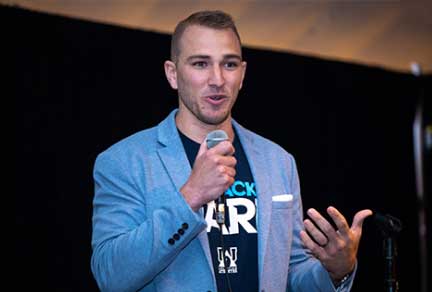Deriving meaningful insights from real-world data for diverse Alzheimer’s research studies
This article is part of a series about challenges and opportunities in developing treatments for dementia.
Stakeholders across the spectrum of clinical research have recognized the critical need for racial, ethnic, gender, and social diversity within studies, and for good reason. For example, women are nearly two times more likely to be affected by Alzheimer’s disease than men. In the modern healthcare technology era, collecting real-world data is integral to ensuring that underrepresented populations are included in drug development. From the perspective of a Life Sciences data strategist, every patient interaction with a clinician, healthcare provider, or even medical device or sensor is an opportunity to capture valuable patient-specific data elements.
Social determinants of health as data elements
Recently, demographic information has gained significant attention from global regulatory agencies relative to drug approvals and the diversity of study participants.
However, regulatory agencies and drug developers are aware that demographic data are not enough to fully capture the factors that might impact patients outside of routine health concerns.
To expand on demographic information, a data-collection practice known as social determinants of health (SDOH) is also gaining acceptance. According to the U.S. Department of Health and Human Services (HHS), social determinants of health “are the conditions in the environments where people are born, live, learn, work, play, worship, and age that affect a wide range of health, functioning, and quality-of-life outcomes and risks.”1 The HHS has grouped these conditions into five categories: economic stability, social and community context, access to healthcare, availability of education, and neighborhood and built environment.
Expanded capture of SDOH via Z-codes
The increase in attention to capturing these SDOH data is attributed to primarily improving the delivery of care to patients and the need for expanded population health services such as mental health services.
However, it is not always easy to routinely capture these “non-medical” social details when a patient visits a healthcare provider, as standard mechanisms for electronic capture may not always be readily available to physicians.
To assist healthcare providers and clinicians in better capturing this information, the Centers for Medicare and Medicaid Services (CMS) implemented ICD-10-CM Z codes, or Z-codes, in 2015. A Z-code is a standard data element included within the ICD-10-CM coding system and in many healthcare electronic capture systems known as the electronic health record, or EHR. Z-codes enable the health system to document patients’ SDOH at any time during a healthcare encounter. Z-codes capture patients’ problems related to education and literacy, housing, and economic circumstances, such as homelessness or limited access to food and transportation. For example, Z-code Z59.87 identifies material hardships due to limited financial resources and relates to patients’ inability to obtain adequate childcare, clothing, or other necessities.
As the CMS, payers, and healthcare systems have begun to add initiatives for diversity, health equity, and reimbursements, clinicians and healthcare providers are increasingly including these codes in their routine patient-visit records. With this information in hand, data strategists can use these elements to help pharmaceutical companies, and CROs implement solutions to drive changes in patient access to clinical trials and the necessary drug treatments.
For example, by utilizing demographics in EHR data, data strategists can easily identify the higher prevalence of Alzheimer’s disease among women compared to men.2
The addition of Z-codes can now expand that data to provide information on social, economic, and mental health barriers, such as homelessness or depression, that may impact an Alzheimer’s patient’s overall quality of life.
Z-codes can provide a mechanism to recognize patients’ needs and challenges that impact their participation in clinical trials, their response to treatments, and, more importantly, their overall outcomes. For example, the Centers for Disease Control and Prevention (CDC) has noted that social isolation was associated with about a 50% percent increased risk of dementia.3 Z-codes can also be combined with other real-world data to evaluate their access to drugs and, ultimately, any improvements in their quality of life from traditional and more recently approved drugs.
Innovative use of SDOH and real-world data to increase trial participation, access to treatment, and targeted drug treatments and outcomes
As additional diversity data elements get captured, combining these coded data and other real-world data can be used in innovative algorithmic methods to improve clinical outcomes and operational efficiencies. These data include, for example, provider notes and patient-reported SDOH such as income and marital status. Applying these innovative algorithms to the growing volumes of real-world data and SDOH can aid in identifying and targeting patients from the preclinical stages through late-stage Alzheimer’s dementia. These insights can assist throughout the research study, from screening patients for inclusion in clinical trials and identifying the risk for patients remaining in a trial to stratifying patients by clinical and social factors that impact drug outcomes.
At Parexel, we are leading the way in using real-world data and algorithms to treat Alzheimer’s disease. Our data strategists are experts trained in medical and pharmacy informatics, data science, and epidemiology, with a practical understanding of the nuances of real-world data and the clinical workflows that capture these data elements. As these data elements grow in volume and complexity, this cross-functional expertise, combined with our scalable, innovative solutions, can enrich our clinical trials and real-world data studies – turning data elements into actionable information across all neurological diseases, including Alzheimer’s. We focus on assuring that the most diverse patient populations are included because improving clinical trials, access to treatments, and putting our patients first is central to everything we do.
Check out the additional blogs a part of the neuroscience series:
- Opportunities and strategies for accelerating patient access to treatments for Alzheimer’s disease
- Regulatory considerations in designing clinical trials for Alzheimer’s disease
- Building a program for patient-guided clinical research for Alzheimer’s disease
- Improving and accelerating clinical research in dementia by integrating the patient’s voice throughout the development journey
About the author
Karina D’Angelo is the director of Scientific Real-World Data Strategy within Parexel’s Scientific Data organization. She has over 25 years of experience in medical informatics, analytics, and real-world data practices and technologies. Karina holds a Ph.D. in biomedical informatics from Columbia University Graduate School of Arts and Sciences.
References
2 More Women Get Alzheimer’s Than Men. Why? Alzheimer’s Association.
Related Insights
Blog
Incorporating the patient voice in clinical research: Validation of COAs for a rare disease NDA
Nov 17, 2025
Webinar
Assessing appropriate use of ECAs in clinical trials
May 28, 2023
Blog
Regulatory considerations in designing clinical trials for Alzheimer’s disease
Jan 24, 2024
Blog
Building a program for patient-guided clinical research for Alzheimer’s disease
Jan 24, 2024
Blog
Removing barriers through pragmatic clinical trials
Oct 12, 2023
Blog
Newly released FDA data and approvals signal a more welcoming regulatory environment for neuroscience clinical trials
Oct 3, 2023
Blog
Studying rare cancer patient populations using integrated genomic and real-world data
Aug 30, 2023
Blog
A hybrid model supports globally diverse site participation for a retrospective cancer study
Jul 24, 2023
Webinar
Adaptive strategies for more efficient, data-rich and patient-friendly trials
May 28, 2023
Blog
How we can bring gene therapies to bear on diseases of aging
Jan 31, 2024
Video
The science and practice of ethnobridging
May 17, 2023
Playbook
Are you using real-world evidence?
Feb 1, 2023
Related Insights
Blog
Incorporating the patient voice in clinical research: Validation of COAs for a rare disease NDA
Nov 17, 2025
Webinar
Assessing appropriate use of ECAs in clinical trials
May 28, 2023
Blog
Regulatory considerations in designing clinical trials for Alzheimer’s disease
Jan 24, 2024
Blog
Building a program for patient-guided clinical research for Alzheimer’s disease
Jan 24, 2024
Blog
Removing barriers through pragmatic clinical trials
Oct 12, 2023
Blog
Newly released FDA data and approvals signal a more welcoming regulatory environment for neuroscience clinical trials
Oct 3, 2023
Blog
Studying rare cancer patient populations using integrated genomic and real-world data
Aug 30, 2023
Blog
A hybrid model supports globally diverse site participation for a retrospective cancer study
Jul 24, 2023
Webinar
Adaptive strategies for more efficient, data-rich and patient-friendly trials
May 28, 2023
Blog
How we can bring gene therapies to bear on diseases of aging
Jan 31, 2024
Video
The science and practice of ethnobridging
May 17, 2023
Playbook
Are you using real-world evidence?
Feb 1, 2023



